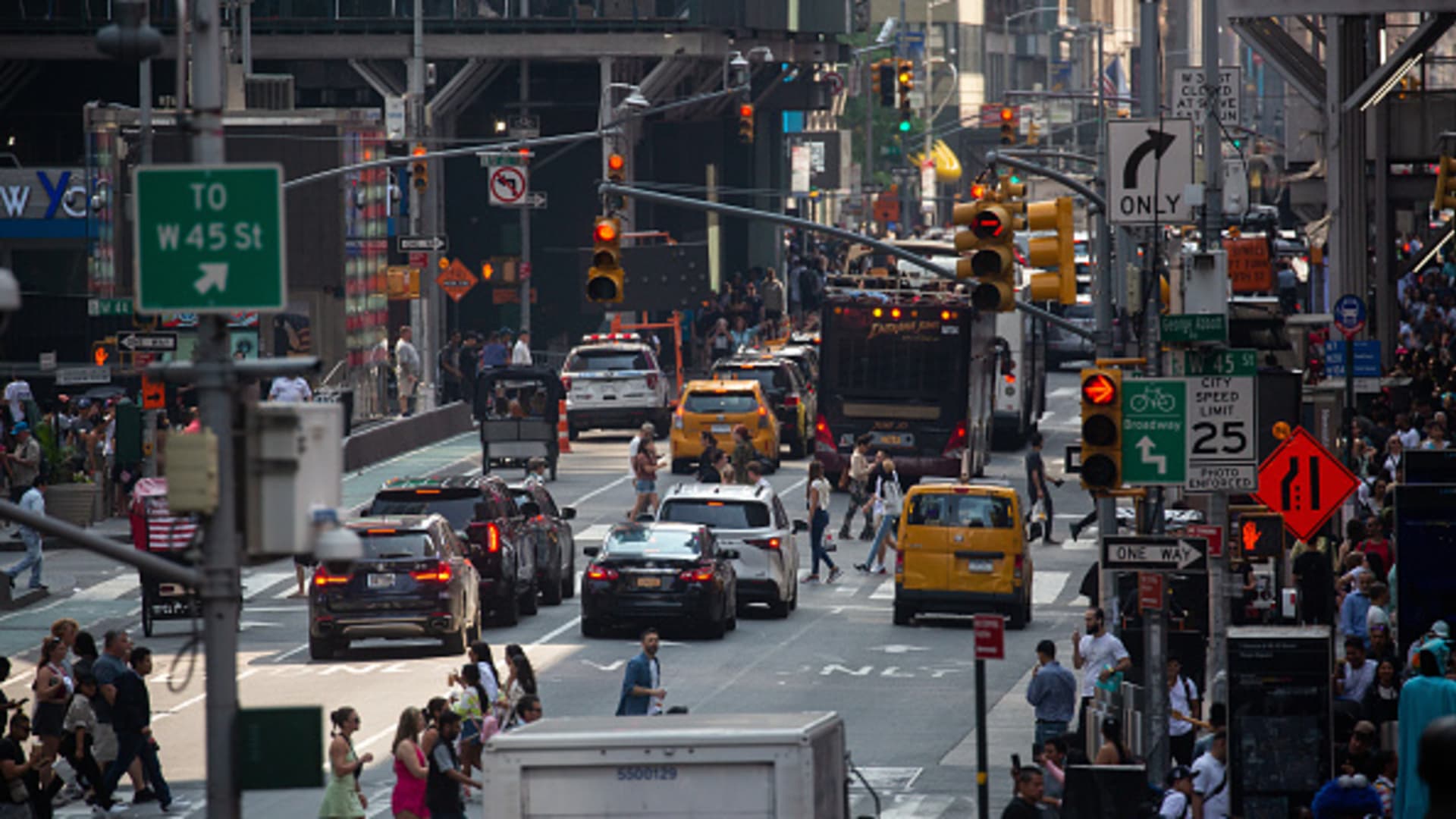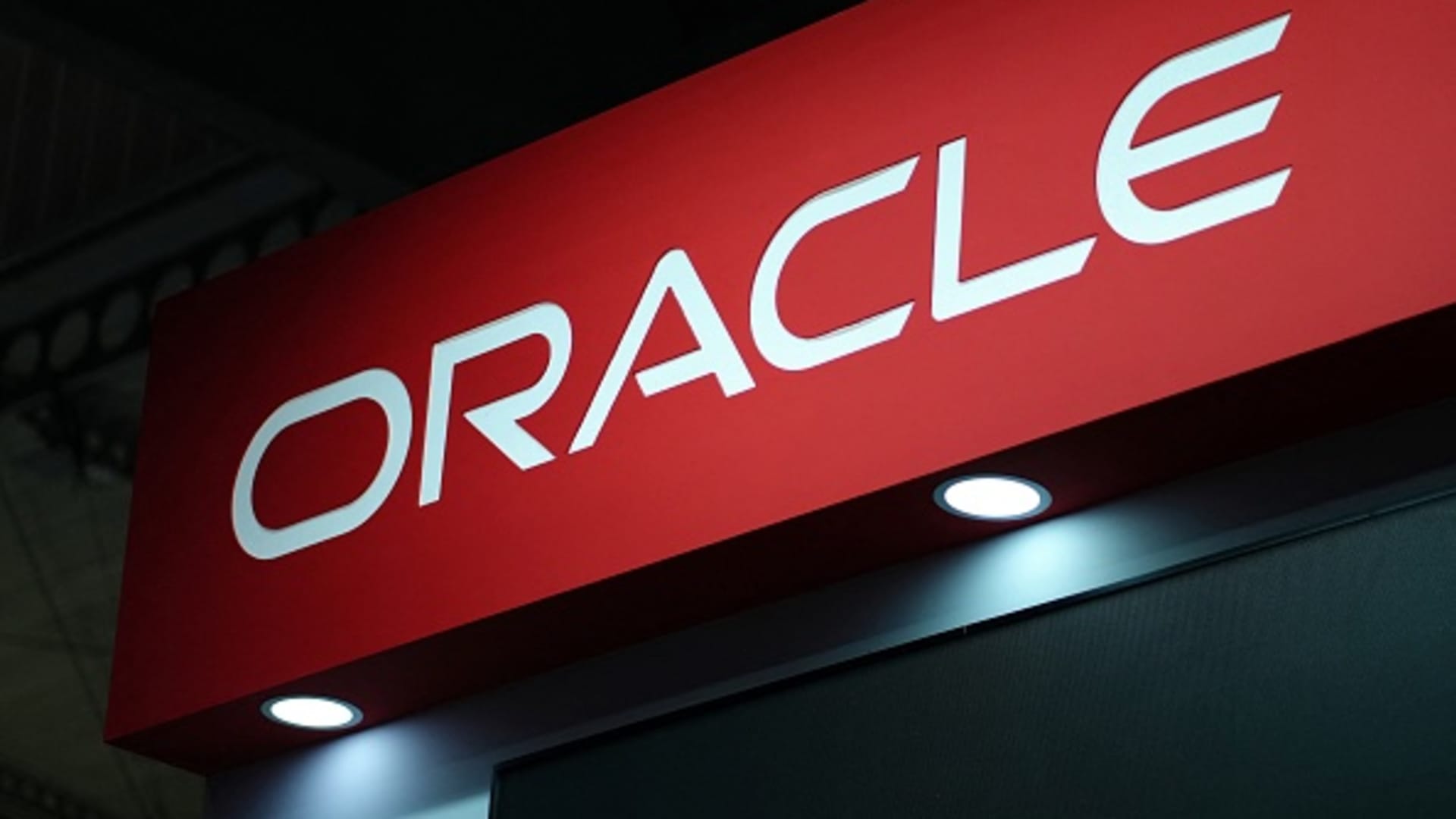
Pedestrians cross a street past traffic in the Midtown neighborhood of New York, US, on Saturday, June 17, 2023. New York City’s congestion pricing plan for the central business district is expected to get final approval this month.
Bloomberg | Bloomberg | Getty Images
After New York City was cleared late last week to move forward with a congestion pricing plan, Governor Kathy Hochul on Tuesday said the largest U.S. city is leading the way to “achieve cleaner air, safer streets and better transit.”
The Federal Highway Administration, a division of the U.S. Department of Transportation, on Friday gave the green light for New York to go ahead with a plan to manage congestion, primarily through tolls in parts of Manhattan.
The measure could go into effect as soon as the spring of 2024, and would be the first of its kind in the U.S., according to New York’s Metropolitan Transportation Authority. State agencies have 310 days to stand up the tolling program and associated infrastructure.
“We are going to be the very first state in the nation, the very first city in America, to have a congestion pricing plan,” Hochul said in a press conference on Tuesday. “Others will look at us. Other cities are paying attention. How is it going to work here? Well, we’re going to show them. We’re going to show them how you do this.”
While it’s a new model for the U.S., congestion pricing plans have previously been implemented in London, Stockholm, and Singapore.
The cost of the toll is still being decided. A six-member Traffic Mobility Review Board is tasked with determining the specific pricing structure.
A report last August on the environmental impact of the plan included toll rates that ranged from $9 to $23 at peak times, $7 to $17 at off-peak times, and $5 to $12 during overnight hours.
Pedestrians cross a street past traffic in the Midtown neighborhood of New York, US, on Saturday, June 17, 2023. New York City’s congestion pricing plan for the central business district is expected to get final approval this month.
Bloomberg | Bloomberg | Getty Images
The toll area covers much of central Manhattan’s surface roads. Cars will be tolled at 60th Street and south, but not on FDR Drive along the East Side or the West Side Highway. There also won’t be tolls in the Battery Park Underpass or on any surface roadway portions of the Hugh L. Carey Tunnel connecting to West Street, according to the MTA.
Tolls will be collected via E-ZPass. For cars that don’t have E-ZPass, a bill will be mailed to the address of the registered vehicle, MTA says.
The congestion pricing plan, formally called the Central Business District Tolling Program, was put together by MTA, the New York State Department of Transportation, and the New York City Department of Transportation. It aims to reduce congestion in Manhattan, improve air quality and raise money to invest in the city’s public transportation system.
Before the Covid pandemic, approximately 700,000 vehicles entered the central business district per day, according to data from the New York Metropolitan Transportation Council shared by the MTA. In 2020, traffic dropped to just 10% of normal volume, but has since rebounded to more than 90% of pre-pandemic levels, a more robust recovery than mass transit ridership, the MTA says.
The MTA Reform and Traffic Mobility Act passed in April 2019 called for the traffic congestion plan, and included certain limits, including making sure passenger vehicles can only be charged once per day for entering the area. Residents of those neighborhoods who make less than $60,000 will be eligible for a state tax credit. The act also requires that overnight toll rates be lower than peak costs and that a discount be available to low-income drivers.
Janno Lieber, the CEO of the MTA, said at Tuesday’s press conference that the plan required a 4,000-page environmental assessment to get federal government to sign off.
“They studied it to death,” Lieber said. “And we studied every intersection almost all the way to Philadelphia. And they studied the air quality, and they studied all it means, and they said that this initiative — this dramatic historic initiative — will not have a significant impact on the 28 million people in the region under federal environmental law. That’s what this means.”
Some New Jersey Democratic lawmakers, however, are upset by the move and the associated costs.
“This is nothing more than a cash grab to fund the MTA,” Representatives Josh Gottheimer and Bill Pascrell and Senator Bob Menendez said in joint written statement published Tuesday.
They wrote that the plan represents an attempt by New York “to balance its budget on the backs of hard-working New Jersey families.”
WATCH: The $52.6 billion plan to save the NYC region from climate change








